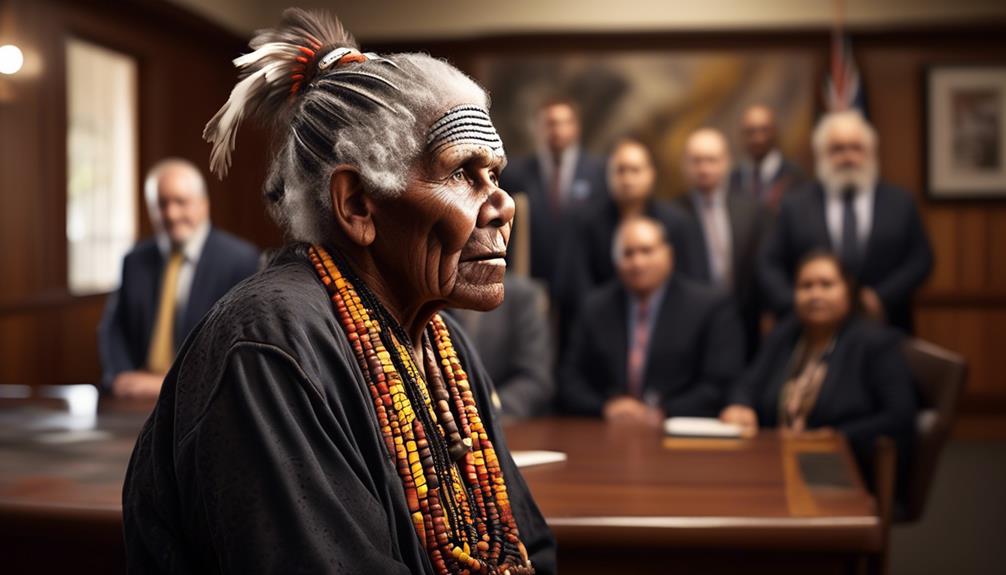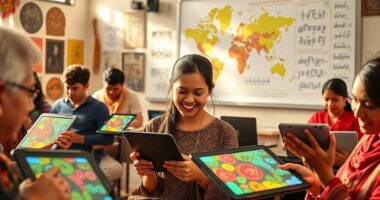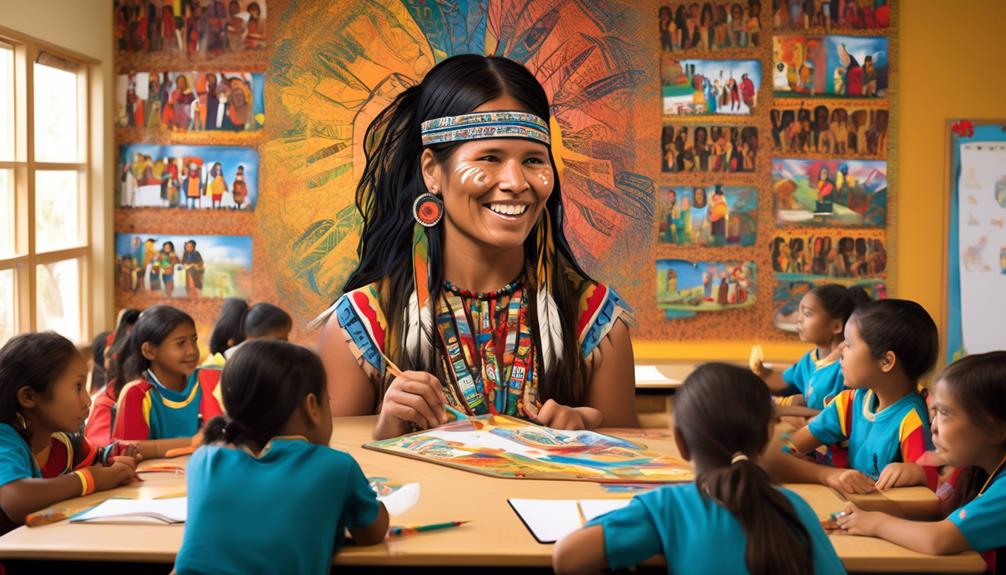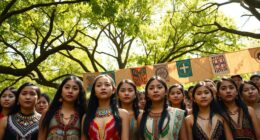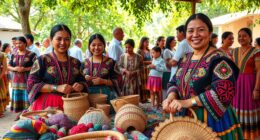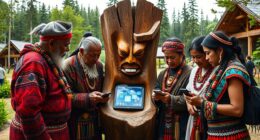When providing guidance to governments and communities on the complexities of Indigenous Australian language issues, it is essential to acknowledge the historical context that has shaped current language strategies.
While progress has been made in recognizing and supporting Indigenous languages, there are still significant challenges to overcome.
The intersection of language, culture, and identity presents intricate considerations that demand thoughtful and informed approaches.
In our exploration of this multifaceted topic, we'll uncover key strategies and insights that can effectively guide language policy and foster meaningful change.
Key Takeaways
- Preserving Indigenous languages is crucial for maintaining cultural heritage and fostering educational success.
- Community engagement strategies are essential for the successful implementation of language revival and bilingual education programs.
- Respectful language use and protocols are important for promoting inclusive and respectful communication with Indigenous communities.
- Understanding the intrinsic connection between spirituality and cultural respect is vital for engaging meaningfully with Indigenous Australian communities.
Importance of Language Preservation
Preserving Indigenous languages is crucial for maintaining cultural heritage and fostering educational success. Australian Indigenous languages hold profound significance, encompassing cultural practices, Indigenous knowledges, and traditional languages. Language maintenance isn't just about words; it's about preserving an entire way of life and the connection to the land. Indigenous language rights continue to be a critical aspect of the cultural agenda, ensuring that these languages aren't just protected but also revitalized and given the space they deserve in our society.
Language restoration and maintenance play a pivotal role in preserving the unique cultural identities of Indigenous communities. These languages aren't just a means of communication; they embody the essence of Indigenous cultures, encapsulating traditions, spirituality, and histories. Moreover, research indicates that learning in one's mother tongue significantly enhances educational outcomes. Thus, the importance of Indigenous language preservation goes beyond cultural appreciation; it directly impacts the educational success and overall development of Indigenous children.
Community Engagement Strategies

Recognizing the pivotal role of Indigenous languages in preserving cultural heritage, we engage with traditional owners, local elders, and content experts when developing language policies and educational materials. Community engagement strategies are essential for the successful implementation of language revival and bilingual education programs. Consultation protocols and respectful language use should be tailored to meet community preferences, ensuring that our efforts align with cultural priorities. Welcome to Country and Acknowledgement of Country practices are crucial for recognizing custodians and connecting to the land, fostering a deep respect for Indigenous peoples and their languages.
To further support Indigenous language education, we aim to foster partnerships between schools, communities, and Indigenous language speakers. This collaborative approach strengthens the ties between educational institutions and Indigenous communities, promoting a sustainable and inclusive framework for language preservation. Inclusive language should be used for all First Nations people, regardless of location or appearance, reflecting our commitment to serving and respecting Indigenous cultures.
| Community Engagement Strategies |
|---|
| – Consultation protocols tailored to community preferences |
| – Welcome to Country and Acknowledgement of Country practices |
| – Partnerships between schools, communities, and Indigenous language speakers |
Language Use and Protocols
Engaging with Indigenous communities to understand their language use and protocols is essential for promoting respectful and inclusive communication. When working with Indigenous peoples, it's crucial to consider their cultural priorities and traditional language usage. This involves consulting with traditional owners, local elders, and content experts to ensure that language use aligns with Indigenous knowledges and community protocols.
In the Australian Indigenous language situation, it's important to recognize the diversity of Indigenous languages, including Aboriginal English and Torres Strait Islander languages. Respectful language use entails utilizing specific terms, plurals, and present tense, as well as employing empowering, strengths-based language. It also requires avoiding discriminatory or offensive terms.
Additionally, it's vital to understand and honor practices such as Welcome to Country and Acknowledgement of Country as a means of showing respect to Indigenous peoples and acknowledging their ongoing connection to the land. Inclusive language should be used for all First Nations people, irrespective of location or historical stereotypes, while also acknowledging the complexity of Indigenous cultures and languages.
Spirituality and Cultural Respect
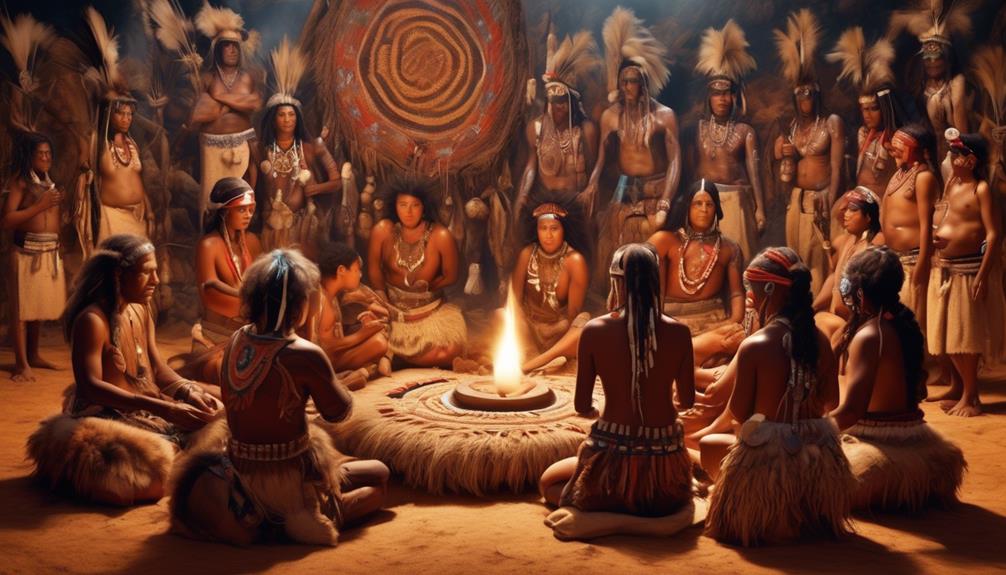
Understanding the intrinsic connection between spirituality and cultural respect is vital for engaging meaningfully with Indigenous Australian communities. Indigenous Australian spirituality is deeply intertwined with the land, traditional practices, and the natural environment. Recognizing and honoring these spiritual beliefs, practices, and traditions is essential in fostering respectful relationships with Indigenous peoples.
When advising on language policy and engaging with Indigenous Australian communities, it's imperative to approach Indigenous languages and cultural priorities with sensitivity and openness. This involves not only acknowledging the significance of Indigenous knowledge but also actively supporting bilingual and bicultural education programs.
Cultural respect entails learning about and engaging with Indigenous Australian spiritual practices and ceremonies, demonstrating a genuine willingness to understand and respect their cultural priorities. By integrating spirituality and cultural respect into our approach to Indigenous language issues, we can build meaningful and respectful partnerships with Indigenous communities, contributing to the revitalization and preservation of Aboriginal languages and cultural heritage.
Consultation and Permissions
Consulting and seeking permissions from traditional owners, local elders, and content experts is a crucial step when advising on Indigenous language issues. This process is fundamental for respecting the cultural priorities of Indigenous peoples and ensuring that policies and educational programs involving Indigenous languages are appropriately implemented.
When engaging in consultation and seeking permissions, it's important to recognize that respectful language use and consultation protocols should align with the preferences of the Indigenous groups involved. Additionally, understanding and respecting consultation and permissions is vital for meaningful and respectful engagement with Indigenous communities regarding language and cultural matters.
In the context of the Australian Indigenous population, permission and consultation are required for practices such as Welcome to Country ceremonies and the use of Indigenous languages in educational programs. This aligns with UNESCO's Action Plan, which emphasizes the importance of involving Indigenous communities in language preservation efforts.
Ultimately, acknowledging the significance of consultation and permissions is essential for creating content and using language in a way that respects and accurately represents Indigenous cultures and languages.
Frequently Asked Questions
How Can We Promote Indigenous Language?
To promote indigenous language, we can support community initiatives, use digital resources, host cultural events, implement educational programs, launch media campaigns, and seek government support. These efforts foster language preservation, intergenerational learning, and Indigenous partnerships.
Embracing linguistic diversity is crucial. By amplifying these measures, we can ensure the vitality and relevance of Indigenous languages. It's about honoring and nurturing these languages, which enrich our cultural heritage and strengthen our collective identity.
What Is the Language Services Policy in Australia?
The Language Services Policy in Australia prioritizes language revitalization, community engagement, and cultural preservation. It emphasizes government support, collaborative initiatives, and public awareness for linguistic diversity and Indigenous empowerment.
We prioritize language documentation and policy implementation to effectively advise on Indigenous Australian language issues. Our approach involves consulting traditional owners, local elders, and content experts to ensure respectful and accurate language use, promoting bilingual programs in education for Indigenous students.
What Is the Language Education Policy in Australia?
In Australia, the language education policy focuses on curriculum development, funding allocation, and teacher training to support bilingual education and language revitalization.
Community engagement and cultural integration are prioritized for effective policy implementation.
Our advocacy emphasizes language preservation and supports the Indigenous Australian communities.
How to Improve Awareness of Aboriginal and or Torres Strait Islander Peoples Cultures?
Improving awareness of Aboriginal and Torres Strait Islander peoples' cultures requires a range of approaches and considerations. One key aspect is developing cultural competency, which involves gaining knowledge and understanding of the traditions, customs, and values of these communities.
Community engagement is another crucial factor in this process. It is important to actively involve indigenous communities in decision-making processes and initiatives that impact their cultural heritage. This can be achieved through collaboration, consultation, and meaningful partnerships.
Respect for traditional practices is also essential. This means recognizing and valuing the significance of indigenous rituals, ceremonies, and ways of life. It involves creating spaces and opportunities for these practices to be upheld, respected, and passed down to future generations.
Cultural preservation and sensitivity are integral components of raising awareness. This includes efforts to safeguard indigenous languages, art, music, dance, and storytelling. It also entails being mindful of cultural protocols and practices when engaging with indigenous communities.
Promoting indigenous representation, awareness, and revitalization is another important aspect. This involves advocating for greater recognition and representation of Aboriginal and Torres Strait Islander peoples in various spheres, such as education, media, and the arts. It also entails supporting initiatives that aim to revive and celebrate indigenous cultures.
Furthermore, cross-cultural communication plays a vital role in fostering understanding and appreciation. This involves actively listening and learning from indigenous communities, valuing their perspectives, and engaging in meaningful dialogue. It also requires being open to challenging existing stereotypes and biases.
Conclusion
In conclusion, promoting and preserving Indigenous languages is pivotal for cultural continuity and community cohesion.
It requires collaboration, consultation, and commitment from all stakeholders.
By incorporating Indigenous languages into education, engaging communities, and respecting language protocols, we can ensure the spiritual and cultural revitalization of Indigenous languages.
Let's work together to promote and protect Indigenous languages for future generations.
Nayeli is our dedicated Editor in Chief, bringing her passion for words and keen editorial eye to every piece of content we produce. With years of experience in the field, she ensures that every article and publication meets the highest standards of quality and clarity. Nayeli’s commitment to storytelling and her deep understanding of our mission make her an invaluable leader in our team.
